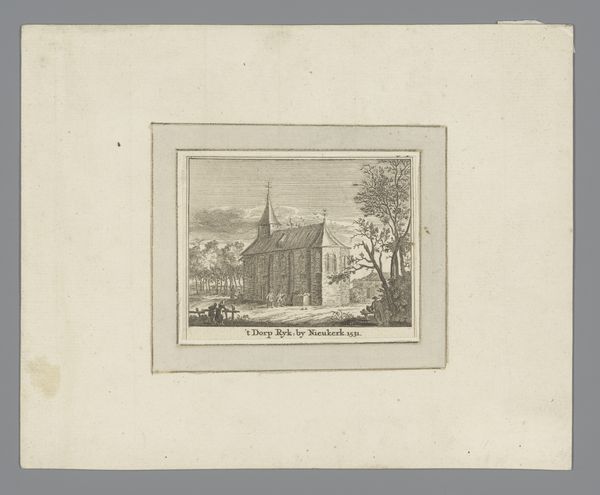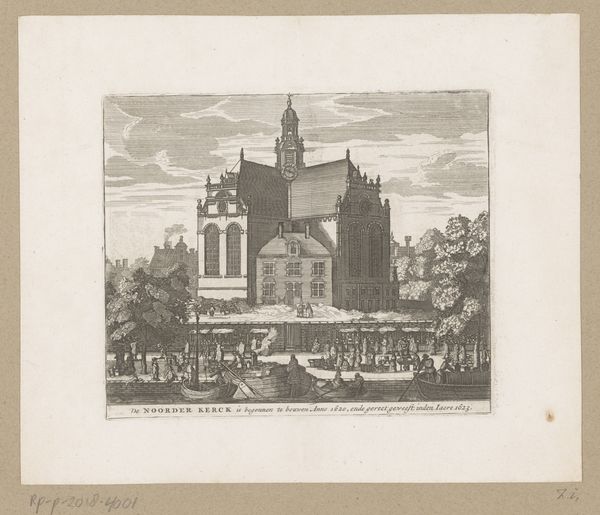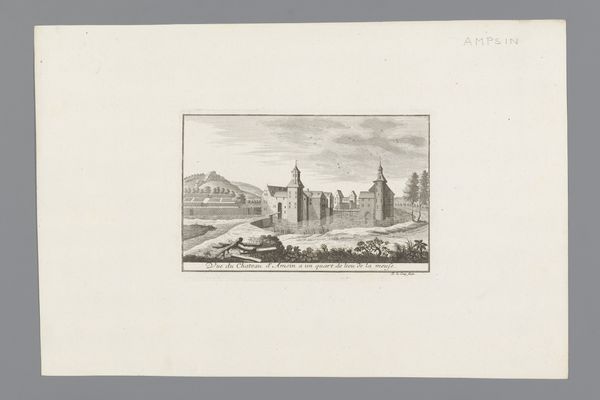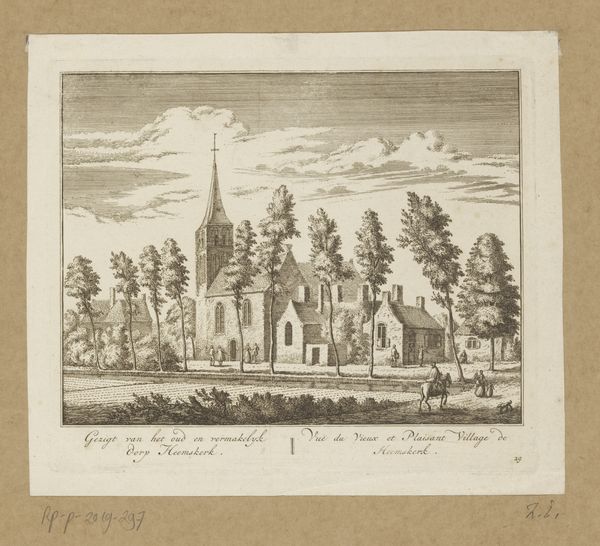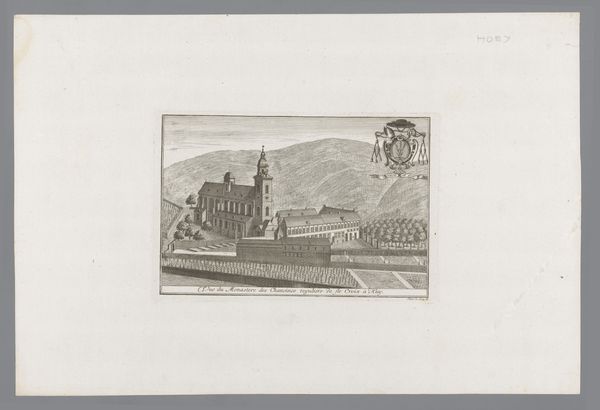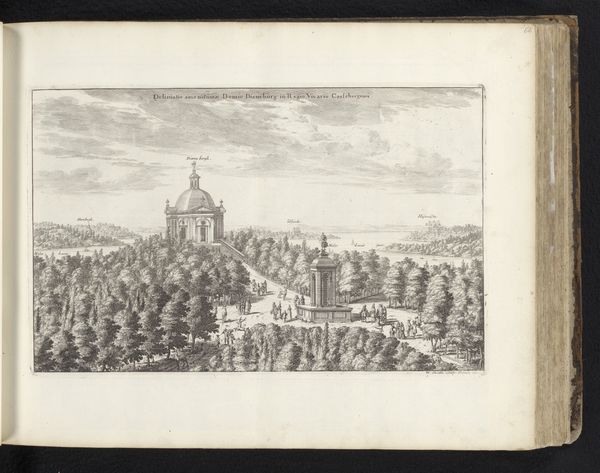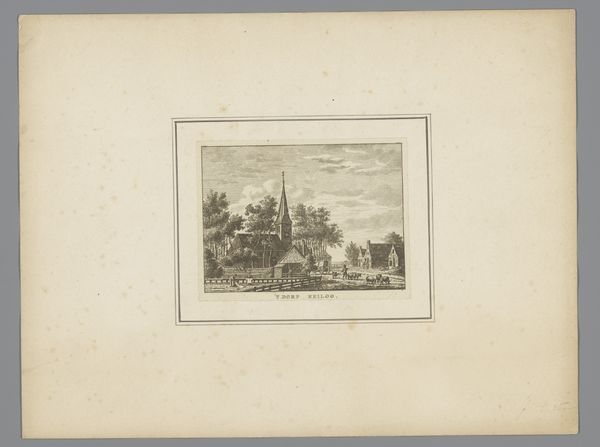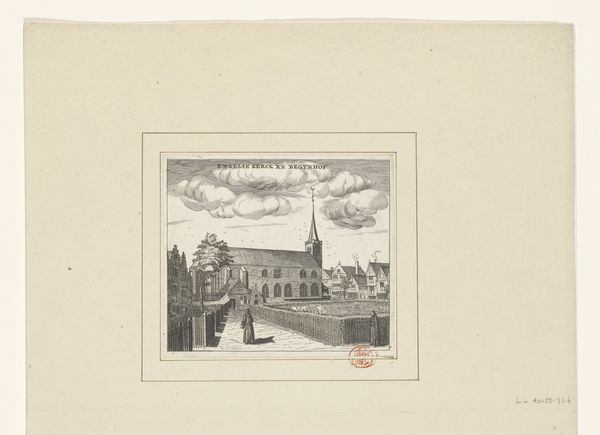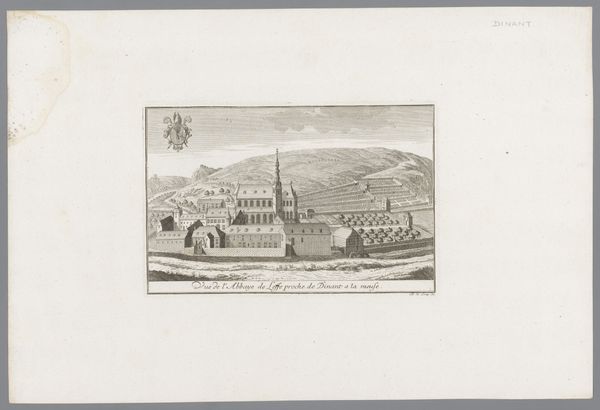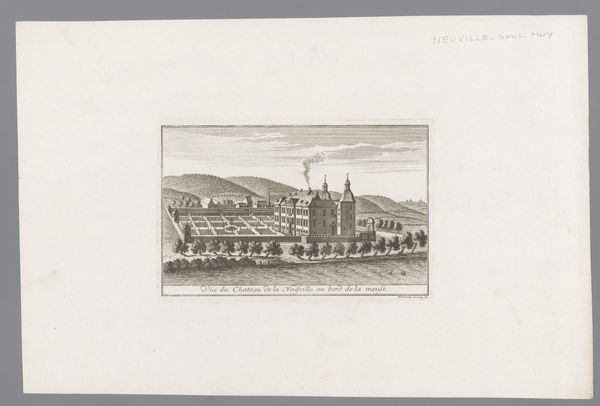
print, engraving, architecture
#
dutch-golden-age
# print
#
landscape
#
line
#
cityscape
#
engraving
#
architecture
#
realism
Dimensions: height 120 mm, width 141 mm
Copyright: Rijks Museum: Open Domain
Editor: This is "Gezicht op de Noorderkerk te Amsterdam," or "View of the Noorderkerk in Amsterdam," created in 1664 by Jan Veenhuysen. It's an engraving, so a print. It has such detail! What strikes me is the contrast between the grand architecture and the daily life around the canal. What can you tell me about this work? Curator: As a materialist, I’m drawn to the engraving process itself. Think of the labor involved, the skilled craft of the engraver translating the scene onto the metal plate. This wasn't just about replicating a view, it was about creating a commodity, a visual object to be consumed. Consider also how printmaking democratized images, making them accessible beyond the wealthy elite. Does seeing it this way change your initial interpretation? Editor: That's fascinating. I hadn't thought about the printmaking process as a form of labor so directly. It does change my perspective; it’s not just a serene landscape, but also an artifact of production, tied to the economy of the time. The choice to depict the everyday feels even more deliberate now. Curator: Exactly. And look closer – what about the people in the foreground? They're not romanticized figures; they're workers, boatmen, ordinary citizens. Veenhuysen gives equal weight to the architecture and these figures. Consider what materials they use and where they dispose them. Think about the waterways, the canals as essential transportation networks for trade and labor. It connects directly to the urban experience. Editor: I see your point. They are a record of a place, a moment in time, but more so, this engraving is evidence of societal and economic structures at play in 17th-century Amsterdam. I now see the relationship between craftsmanship, consumption, and subject matter, all thanks to your approach! Curator: Indeed. By examining the material production and social context, we unveil layers of meaning that transcend the purely aesthetic.
Comments
No comments
Be the first to comment and join the conversation on the ultimate creative platform.
